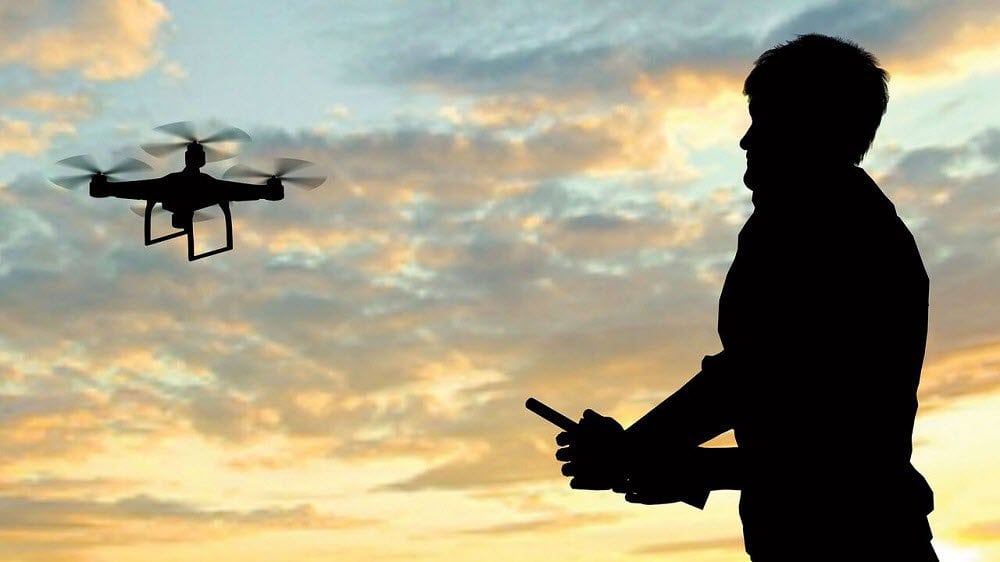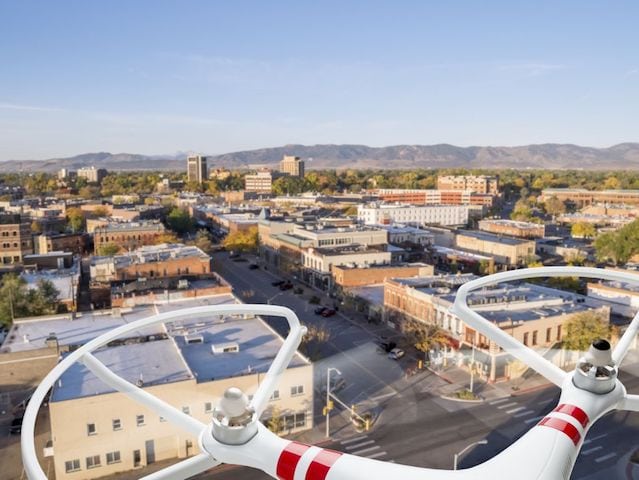
More and more civilians are buying drones. (File photo)
Drones flew too close to manned aircraft 1,200 times in 2015, according to the FAA. In 2016, that number jumped to 1,800 times. In 2017, there was an actual collision between an unmanned aircraft and a Blackhawk helicopter.
That tracks with ownership trends, as the number of civilian-owned unmanned aircraft systems (UAS) registered with the FAA has reached well over 1 million in 2018, including nearly 900,000 for recreational use. That list was started just over two years ago, in December 2015, and there were 150,000 registrants by the end of the month. In July 2016, it had more than half-a-million. At the same time the following year, it was approaching 800,000.
This despite the fact that, for most of 2016 and 2017, small UAS owners (operating under Special Rule for Model Aircraft, section 336) did not have to register with the FAA because of legal battles between the FAA and drone hobbyists over jurisdiction and privacy.
So, it might seem like the U.S. is headed toward a future of skies darkened by drones flitting about overhead like swarms of oversized electronic insects. But there is reason to be optimistic.
For starters, these drones can do some good things, for both the economy and your quality of life. According to Brian Wynne, president and CEO of the Association for Unmanned Vehicle Systems International, they “are capable of saving time, saving money and most importantly, saving lives.”
Wynne said in an e-mail that drone technology will create more than 100,000 jobs and $82 billion dollars for the U.S. economy within the first decade after its integration into airspace. Between commercial and recreation unmanned craft that the FAA projects to be flying in the coming years, drones will be a major part of the aviation industry.
Of course, that won’t happen if they’re crashing into things left and right. There are a lot of thoughts on ways to help prevent that. Some of them are technical, with a lot of companies across the tech and aviation sectors working on their own solutions.
According to Kip Spurio, the aviation technical director at Raytheon Intelligence, Information and Services, a lot of it comes down to “giving the drone itself the ability to not run into things.” Or, as it’s often referred to, “sense and avoid.” As the name implies, the tech would notice when the drone is getting to close to another aircraft and automatically swerve it away before returning control to the operator.
Military jets sometimes use something like this, and cars are starting to as well (think automatic braking). Some manufacturers are trying to use sense-and-avoid solutions to keep UAS away from aircraft, while others are trying to tackle obstacle avoidance in general.
Higher-end drones — Spurio particularly points to the ones made by DJI — can allow firmware updates, which can help keep drones out of trouble if there are changes in restricted airspace because the drone gets the update and could start automatically staying out of that area.
Spurio said that Raytheon is also working on giving drones avionics that can identify micro-weather, picking up on differences in climate down to the street level. Weather is so important to the operation of a small aircraft, Spurio said, that between this tech and surveillance, drone location could be easily tracked, which can also help to keep UAS safe and sound.
One problem with technical solutions is that not every UAS will come equipped with the same things. Spurio likened this to the commercial manned aircraft market, where there is such a wide range of capabilities that it makes regulation difficult for the FAA. Sure, those high-end DJI drones are getting updates on what airspace is restricted and have the fancy new baubles to keep them where they’re supposed to be, but a budget model won’t have the same benefits.

A drone flying in an urban locale. (Photo courtesy Interdrone)
And both Spurio and Wynn identified regulation as one of the crucial but tricky issues facing drones right now.
“Something has to be done, or something has to be done differently,” Spurio said. He watched the FAA trying to walk the line between fostering innovation and ensuring everyone’s safety from the inside a few years ago and thinks that balancing act is still ongoing. He said another obstacle is that “the FAA makes regulations by correlation. ‘Based on activities that happened in the past, I can therefore correlate safe versus unsafe, and I can make rules based on that correlation.’ Well, there just isn’t a lot of history with these little airplanes, and because of that, they’re having a hard time defining what they need to do.”
Wynne pointed out that pilots of commercial UAS flying under part 107 are required to pass an aeronautical knowledge test and get a remote pilot certificate which expires every two years. But that doesn’t apply to section 336 owners.
“These newcomers want to fly, but don’t realize that just because they can easily acquire the technology, doesn’t mean they should fly it anywhere and for any purpose,” he said. AUVSI started a campaign called Know Before You Fly with the Academy of Model Aeronautics aimed at combatting that issue, and he said it has received support from many organizations and sellers who have agreed to put the campaign website’s URL or a QR code on products or product pages on their website.
It can be tricky to expect everyone to know what’s expected of them, Wynne admits, when rules can change from city to city, county to county or state to state, though, or when those rules don’t mesh with federal regulation. Wynne represents the unmanned vehicle industry on the FAA’s 13-person management advisory council. He said that the issue of state vs. federal authority jurisdiction can be a thorny one for the FAA.
Spurio echoed those thoughts, expressing the need for standardized rules that aren’t “a patchwork from community to community” requiring “you to change your entire solution depending on where you’re operating.” The current situation is a function of the newness of the industry and the myriad parties trying to advocate for their interests.
“The aviation rulemaking committee is based on consensus. Not surprisingly, they weren’t able to come to a consensus, so somebody is going to have to take the bull by the horns,” Spurio said. “[Raytheon is] going to support whoever does that.”
He also reminded that rules require enforcement on the back end to be effective, which he sees as another outstanding issue for the UAS industry.
“Currently, it’s kind of like a good citizen model being envisioned for regulations once they’re decided upon,” Spurio said. “They’re going to make the rules and everyone is going to go off and follow the rules as good citizens. It’s questionable how effective that’s going to be in the end. There really is no enforcement mechanism right now. There is going to need to be something like that set up.” In the way that if an airline violates FAA regulations, the regulator can assess fines in accordance with law, the potential enforcement for a part 107 drone pilot flying above 400 feet is less clear.
Wynne said that the FAA can work with local law enforcement to pursue criminal charges where appropriate, such as in cases of trespass or injury to persons or property. He also pointed to the now-reinstated UAS registration system as a deterrent to misuse. But those cases are relatively somewhat limited, and he agreed that “stricter enforcement will not only punish irresponsible operators, it will also serve as a deterrent to others for misusing UAS technology.”
There is no doubt that more UAS are coming. Companies are pouring money into the tech, and consumers are flocking to them. And since the industry is growing so much and holds so much promise, it will be forced to adapt, both in terms of technical and regulatory solutions, to fit in with air- and ground-based society. Progress is being made, but it isn’t yet clear what will shake out as the dominant way of life for drone owners and manufacturers.
One thing is certain: with 1 million UAS in the sky already, everyone is trying to get there soon.